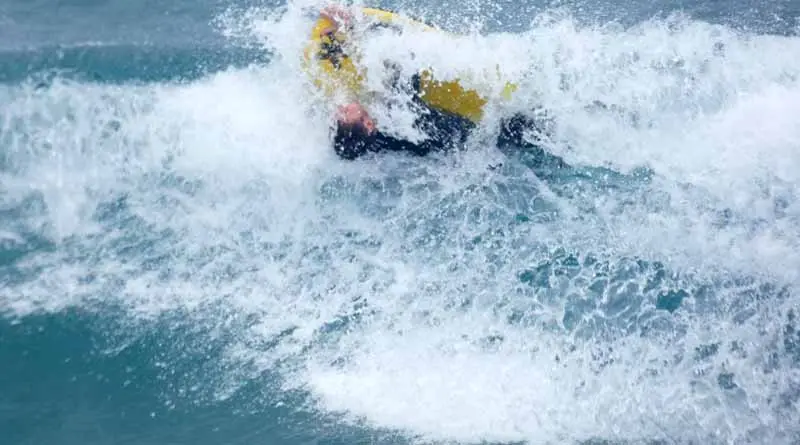
How do I avoid capsizing while kayaking?
Mastering the Art of Stability
The water’s surface gleams like a sheet of glass this morning, a perfect day for kayaking. As I prepare my gear, the thought lingers in my mind—a question as persistent as the tide: “How do I avoid capsizing while kayaking?” It’s a fundamental query for any kayaker, novice or seasoned. The concern isn’t merely about getting wet; it’s about safety, about maintaining harmony between paddler and kayak in the fluid dance upon the water.
Enhancing Stability and Avoiding Capsizing in Kayaking
Capsizing while kayaking can be influenced by a myriad of factors ranging from the choice of equipment to paddler error and environmental conditions. Understanding and addressing these factors are essential for enhancing stability and safety on the water.
Options to Enhance Stability
Proper Kayak Selection:
The type of kayak you choose plays a critical role in stability. Kayaks are designed with various hull shapes and lengths, which impact their performance in different water conditions.
- For Beginners: A wider kayak offers increased stability and is less likely to capsize in calm waters. These are ideal for beginners or recreational paddlers.
- For Advanced Paddlers: Narrower, longer kayaks are less stable but faster and more suitable for experienced paddlers navigating rough waters.
Weight Distribution:
How weight is distributed within the kayak significantly affects its stability. Uneven weight distribution can make the kayak tilt or capsize more easily.
- Proper Loading: Ensure gear and personal weight are evenly spread out. Heavier items should be secured low and near the center of the kayak to maintain a low center of gravity.
- Paddler Positioning: The paddler’s position in the kayak should also be centered. Leaning too far to one side can destabilize the kayak, especially in choppy conditions.
Technique Mastery:
Mastering paddling techniques is not only about propelling the kayak forward but also managing balance and control in varying aquatic environments.
- Paddling Strokes: Learn efficient paddling strokes to maintain control and balance.
- Bracing Techniques: Bracing helps stabilize the kayak when a wave hits or when navigating turns. It involves using the paddle as a support against the water to prevent capsizing.
Obstacles to Stability
Inadequate Preparation:
Lack of proper training and understanding of how to handle a kayak in different situations can lead to capsizing.
Environmental Challenges:
Conditions such as strong winds, currents, and waves significantly affect water stability and can unpredictably alter the behavior of the kayak.
Overconfidence or Panic:
Overconfidence can lead to underestimating the conditions, while panic in unexpected situations can lead to hasty decisions that destabilize the kayak.
Implementing the Best Solutions
To effectively manage and mitigate these challenges, kayakers should adopt a comprehensive approach encompassing equipment selection, skill development, and environmental awareness.
1. Select the Right Kayak:
- Action: Assess the primary use of the kayak—recreational, touring, or whitewater—and select accordingly. Retailers and experienced kayakers can provide recommendations based on your needs.
- Benefit: Aligning the kayak’s characteristics with the paddler’s abilities and the typical water conditions encountered enhances stability and safety.
2. Master Paddling Techniques:
- Action: Enroll in kayaking courses offered by certified instructors that focus on fundamental and advanced kayaking techniques.
- Benefit: Increases proficiency in handling the kayak, reducing the risk of capsizing due to paddler error.
3. Understand and Practice Weight Distribution:
- Action: Regularly practice loading your kayak and adjusting your position to optimize balance and response.
- Benefit: Promotes greater stability and control in various conditions, decreasing the likelihood of capsizing.
4. Prepare for Environmental Factors:
- Action: Always check the weather and water conditions before heading out. Use reliable sources, like weather apps or local marine forecasts.
- Benefit: It ensures that you kayak in conditions that match your skill level and preparedness, avoiding unnecessary risk.
5. Develop Safety and Recovery Skills:
- Action: Learn self-rescue techniques such as re-entering the kayak from the water. Practice these skills regularly.
- Benefit: It prepares you to effectively handle capsizing if it occurs, ensuring a swift and safe recovery.
By addressing these aspects, kayakers can significantly enhance their stability on the water, making their experiences safer and more enjoyable. Whether a novice learning the ropes or an experienced paddler challenging the rapids, preparation and knowledge are your best tools against capsizing.
Essential Resources and Tools
Equip yourself with the following to effectively prevent capsizing:
- Training Courses: Kayaking schools or certified instructors provide essential skills training.
- Safety Gear: Always have a PFD, a helmet (if in rough water), and appropriate clothing for the water temperature.
- Condition Monitoring Tools: Use apps or services to track weather and water conditions.
Avoiding capsizing while kayaking starts long before you hit the water. It begins with a commitment to understanding your environment, your equipment, and most importantly, yourself. With the right kayak, a mastery of technique, and a respect for the power of the water, you transform the risk into just another ripple on the lake. As I push off from the shore today, equipped not just with gear but with knowledge, the waters ahead seem a little less daunting, and the day’s potential is a lot more exhilarating.






